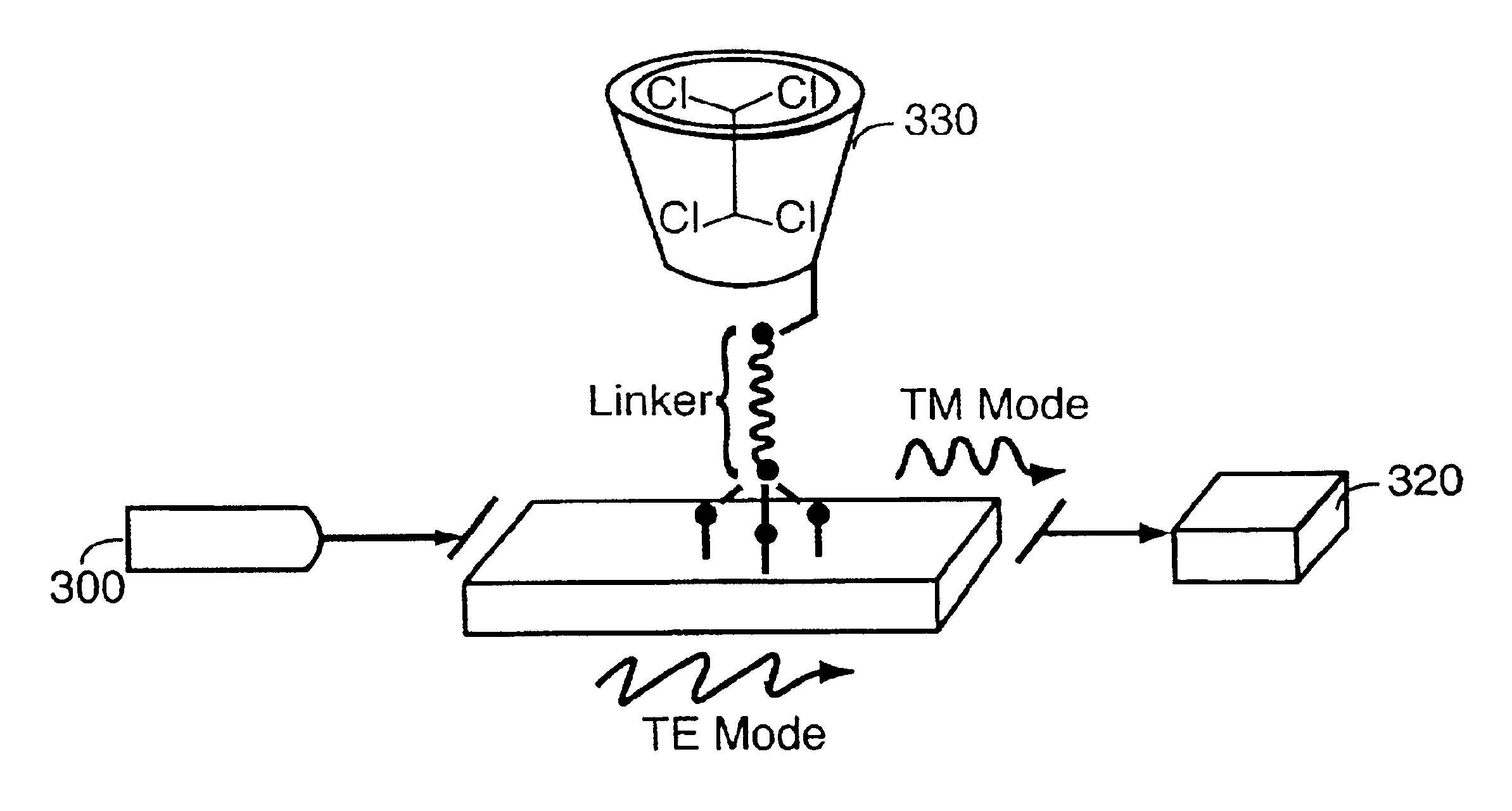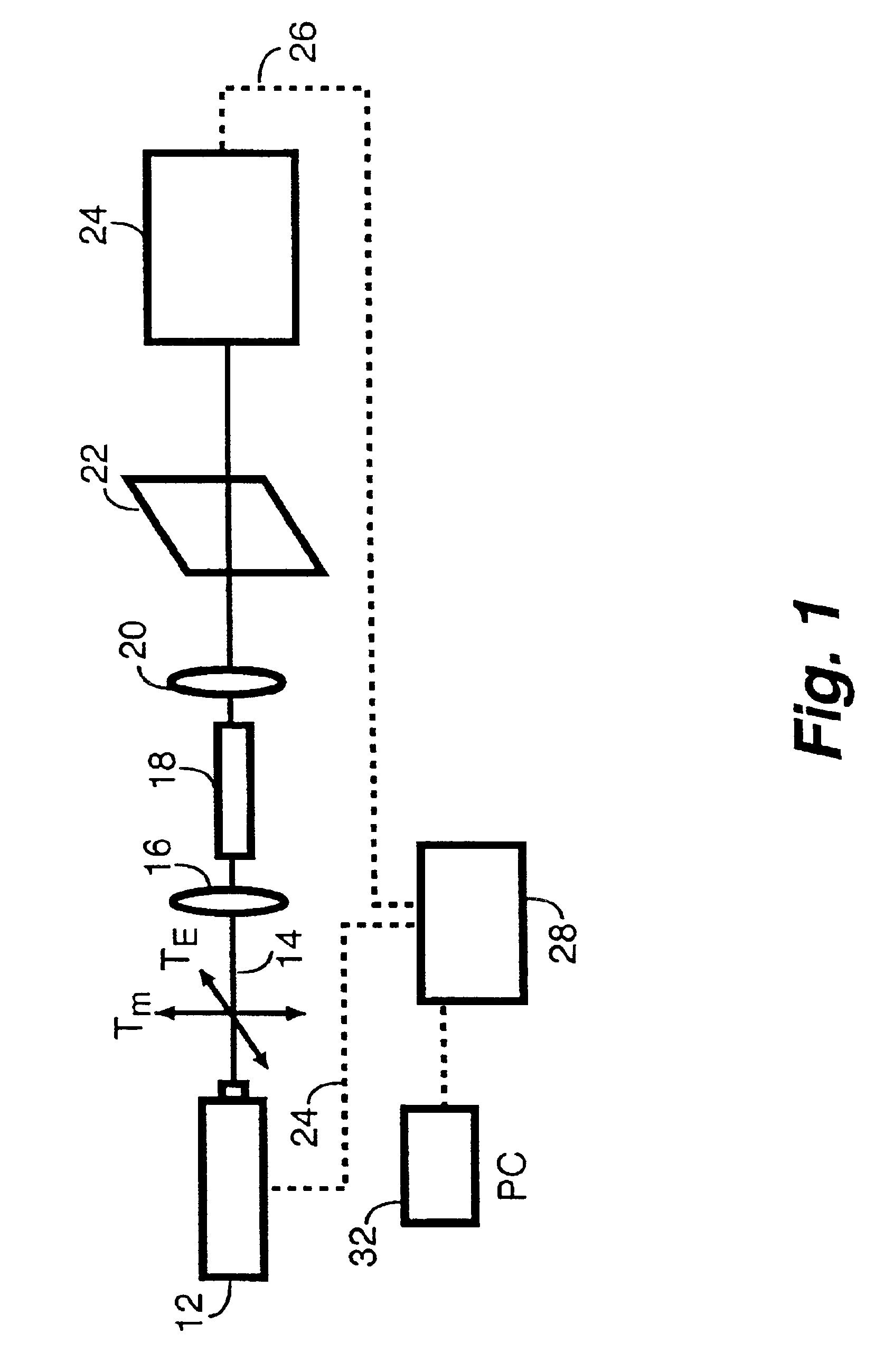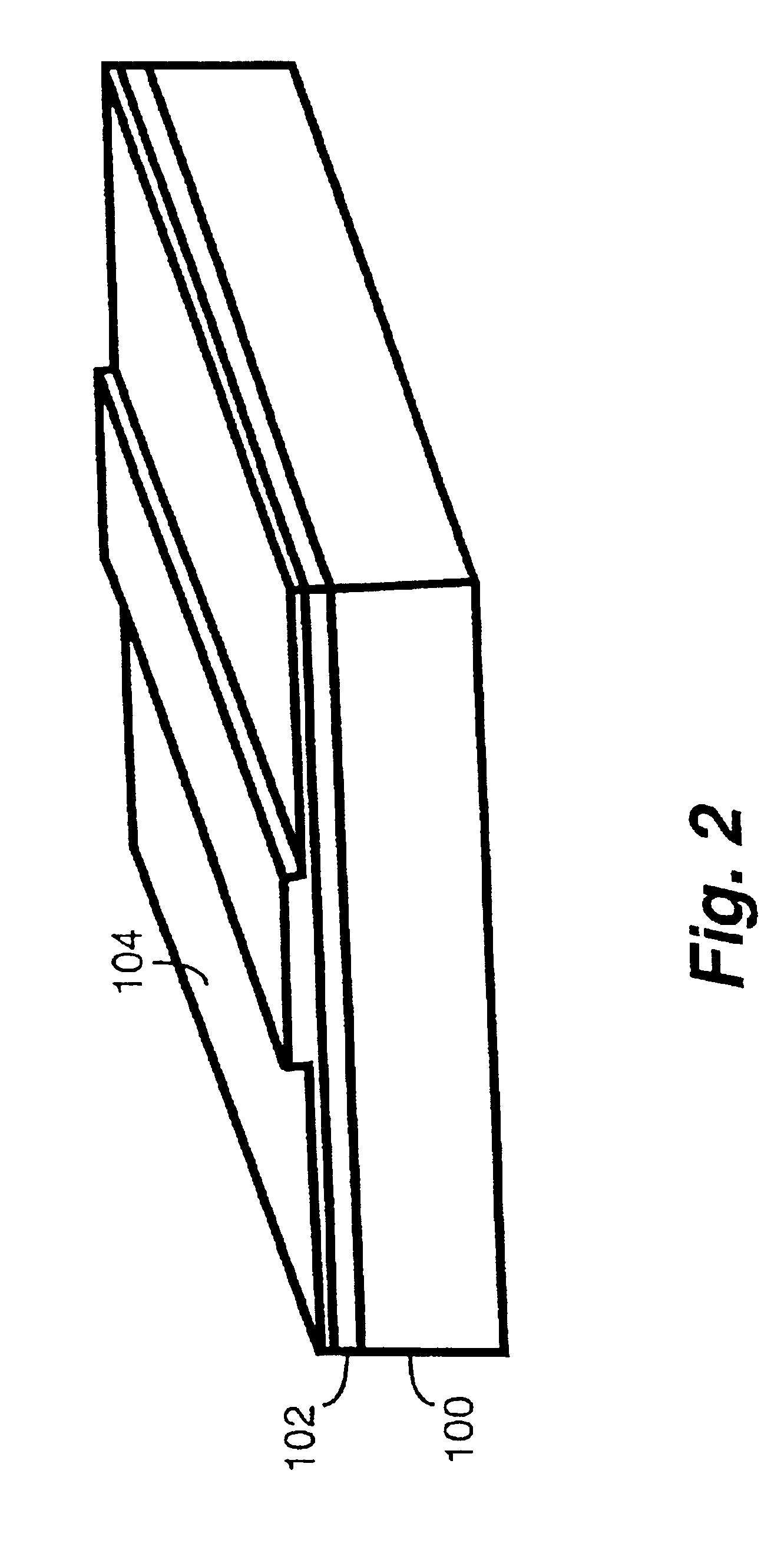Waveguide-based optical chemical sensor
- Summary
- Abstract
- Description
- Claims
- Application Information
AI Technical Summary
Benefits of technology
Problems solved by technology
Method used
Image
Examples
Embodiment Construction
A sensor beam consisting of two collinear, orthogonally polarized modes of laser light having a small difference in frequency is produced by a laser or other laser light source. The beam is coupled into a planar optical waveguide. Species selective thin films of host reagents with cavity shaped molecules specifically tailored for optimized and reversible binding of targeted chemicals are covalently bound to the external surface of the waveguide. The host reagents form reversible inclusion complexes with the targeted molecules.
The index of refraction of the species-selective thin film of host reagent varies according to the number and kind of guest-host inclusion complexes formed in the film.
Each of the orthogonal modes of the beam propagating through the waveguide undergoes different changes in effective refractive index due to the formation of guest-host inclusion complexes on the surface of the waveguide. As a result there is phase retardation of one of the modes relative to the o...
PUM
 Login to View More
Login to View More Abstract
Description
Claims
Application Information
 Login to View More
Login to View More - R&D
- Intellectual Property
- Life Sciences
- Materials
- Tech Scout
- Unparalleled Data Quality
- Higher Quality Content
- 60% Fewer Hallucinations
Browse by: Latest US Patents, China's latest patents, Technical Efficacy Thesaurus, Application Domain, Technology Topic, Popular Technical Reports.
© 2025 PatSnap. All rights reserved.Legal|Privacy policy|Modern Slavery Act Transparency Statement|Sitemap|About US| Contact US: help@patsnap.com



